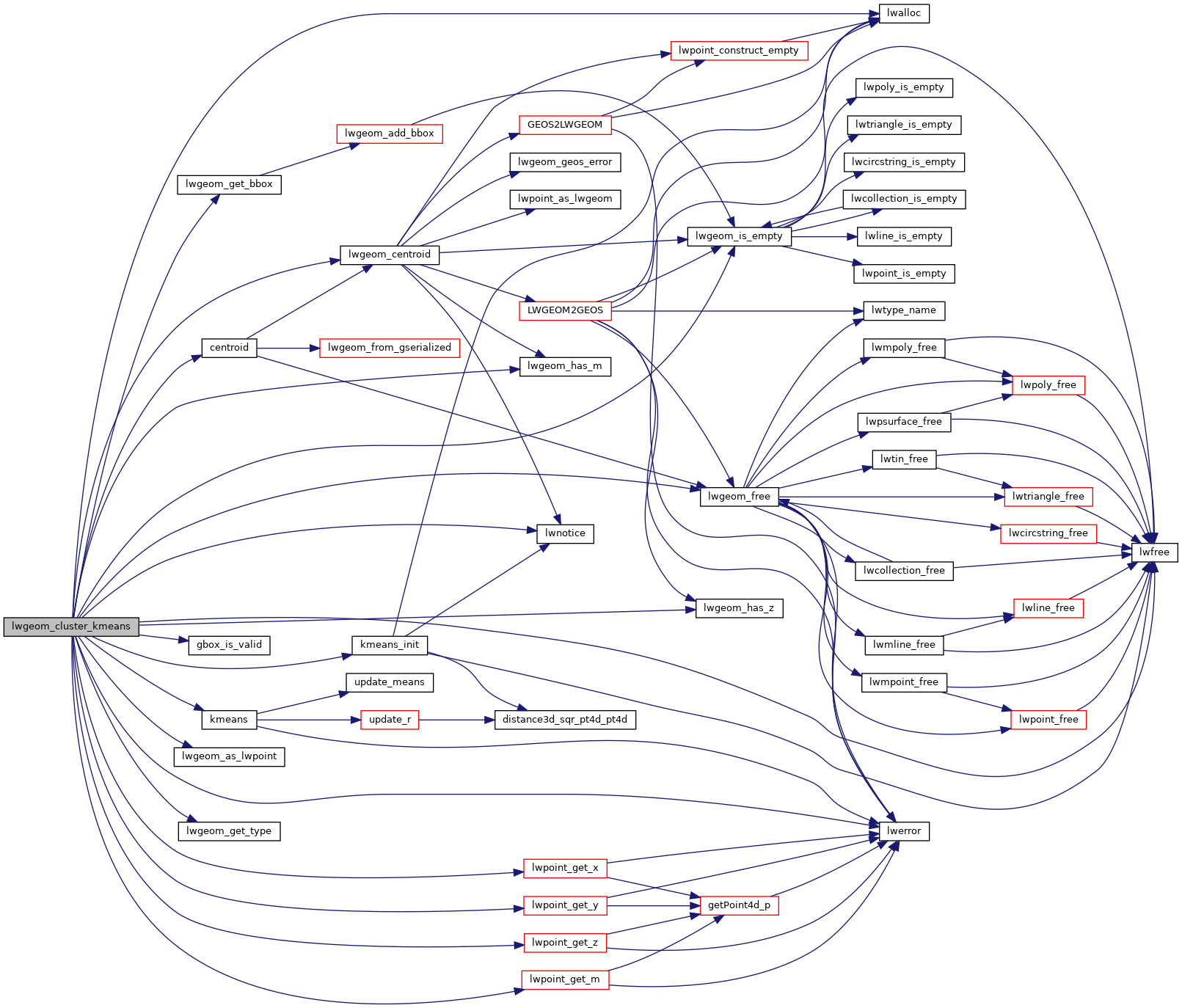◆ lwgeom_cluster_kmeans()
| int* lwgeom_cluster_kmeans | ( | const LWGEOM ** | geoms, |
| uint32_t | ngeoms, | ||
| uint32_t | k | ||
| ) |
Take a list of LWGEOMs and a number of clusters and return an integer array indicating which cluster each geometry is in.
- Parameters
-
geoms the input array of LWGEOM pointers ngeoms the number of elements in the array k the number of clusters to calculate
Definition at line 206 of file lwkmeans.c.
218 "%s: number of geometries is less than the number of clusters requested, not all clusters will get data",
296 "%s: number of non-empty geometries (%d) is less than the number of clusters (%d) requested, not all clusters will get data",
int gbox_is_valid(const GBOX *gbox)
Return false if any of the dimensions is NaN or infinite.
Definition: gbox.c:197
int lwgeom_has_z(const LWGEOM *geom)
Return LW_TRUE if geometry has Z ordinates.
Definition: lwgeom.c:917
const GBOX * lwgeom_get_bbox(const LWGEOM *lwgeom)
Get a non-empty geometry bounding box, computing and caching it if not already there.
Definition: lwgeom.c:726
int lwgeom_has_m(const LWGEOM *geom)
Return LW_TRUE if geometry has M ordinates.
Definition: lwgeom.c:924
static int lwgeom_is_empty(const LWGEOM *geom)
Return true or false depending on whether a geometry is an "empty" geometry (no vertices members)
Definition: lwinline.h:203
static uint8_t kmeans(POINT4D *objs, int *clusters, uint32_t n, POINT4D *centers, uint32_t k)
Definition: lwkmeans.c:90
static void kmeans_init(POINT4D *objs, uint32_t n, POINT4D *centers, uint32_t k)
Definition: lwkmeans.c:108
Definition: liblwgeom.h:366
Definition: liblwgeom.h:471
Definition: liblwgeom.h:427
References centroid(), gbox_is_valid(), kmeans(), kmeans_init(), KMEANS_NULL_CLUSTER, LW_FALSE, LW_TRUE, lwalloc(), lwerror(), lwfree(), lwgeom_as_lwpoint(), lwgeom_centroid(), lwgeom_free(), lwgeom_get_bbox(), lwgeom_get_type(), lwgeom_has_m(), lwgeom_has_z(), lwgeom_is_empty(), lwnotice(), lwpoint_get_m(), lwpoint_get_x(), lwpoint_get_y(), lwpoint_get_z(), POINT4D::m, POINTTYPE, POINT4D::x, GBOX::xmax, GBOX::xmin, POINT4D::y, GBOX::ymax, GBOX::ymin, POINT4D::z, GBOX::zmax, and GBOX::zmin.
Referenced by ST_ClusterKMeans(), and test_kmeans().
Here is the call graph for this function:

Here is the caller graph for this function:
